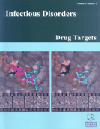
Full text loading...
We use cookies to track usage and preferences.I Understand
Clostridium difficile is an opportunistic infection that can lead to antibiotic-associated diarrhea and toxic megacolon.
This systematic review study aimed to investigate polyphenols' antibacterial and anti-toxin properties and their effects on reducing complications related to C. difficile Infections (CDI).
This systematic review was conducted following the PRISMA guideline 2020. Multiple databases, including Web of Science, PubMed, Cochrane Library, EMBASE, and Scopus, were searched thoroughly for existing literature. After considering the inclusion and exclusion criteria for the review, 18 articles were included. Data were collected and registered into an Excel file for further investigations and conclusions.
Polyphenols by reducing Reactive Oxygen Species (ROS) levels, increasing inflammatory factor Interleukin 10 (IL-10), reducing Nuclear Factor kappa B (NF-κB) and Tumour Necrosis Factor-α (TNF-α), IL-6, IL-1α, IL-1β, Granulocyte Colony-stimulating Factor (G-CSF), and Monocyte Chemoattractant Protein-1 (MCP-1) and Macrophage Inflammatory Protein-1 alpha (MIP-1α) levels, and regulating the expression of Bcl-2 and Bax, make the growth and replication conditions of C. difficile more difficult and prevent it from producing toxins. Furthermore, polyphenols can exhibit prebiotic properties, promoting the growth of beneficial Bifidobacterium and Lactobacillus species and consequently regulating gut microbiota, exerting antimicrobial activities against C. difficile. They also induce their beneficial effects by inhibiting the production of C. difficile TcdA and TcdB.
Polyphenols have been reported to inhibit C. difficile growth and toxin production by several mechanisms in preclinical studies. However, more clinical studies are needed to investigate their safety in humans.

Article metrics loading...

Full text loading...
References


Data & Media loading...
Supplements

